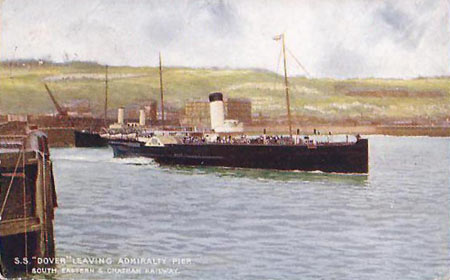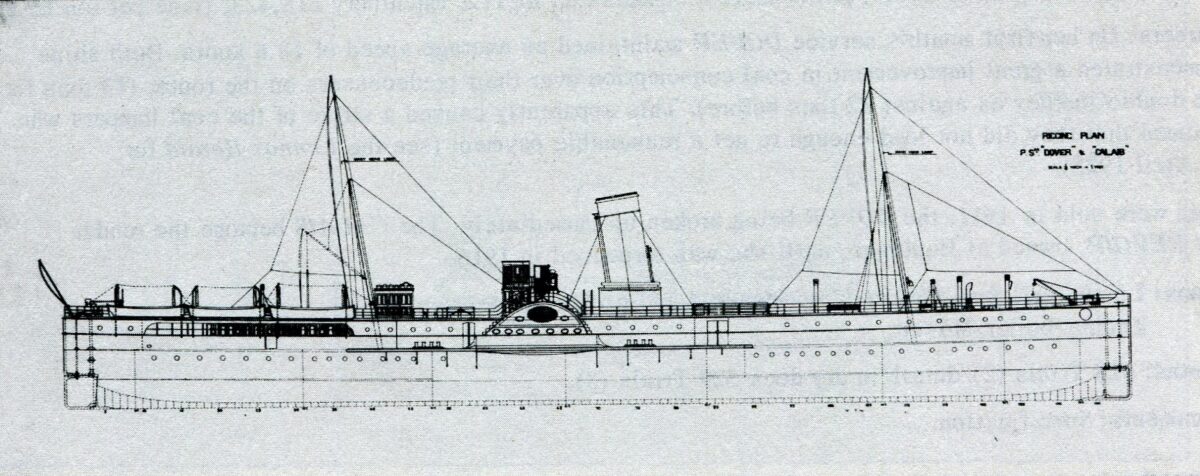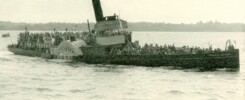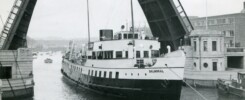
On Monday 2nd December 1895 the paddle steamer Dover was launched from the yard of Denny of Dumbarton on the Clyde.
She and her sister Calais, also on the stocks in the Denny yard at the time, were built for the London, Chatham and Dover Railway ferry service between Dover and Calais.
The design parameters for them were tight as set out in the contract. They had to be capable of 18.5 knots to combat delays in the service time. They had to be able to do that on a draught of 8.5ft to access the ports at all states of the tide. They had to have an economical coal consumption for their size of not more than 10 tons per trip between Dover and Calais. And all this whilst carrying 95tons deadweight equivalent to about 1,300 passengers..
The contract didn’t stop there. They also had to be able to demonstrate at the builder’s risk but at the new owner’s expense that the coal consumption at 18 knots was in line with the specification over a month in service on the route.
They passed this test with flying colours with Dover burning just 13 tons per round trip. According to a report in the Lennox Herald this did not go down well with the coal humpers at Dover who had previously had to shift up to 32 tons for the round trip per ship and felt that these three economical beauties were taking work away from them.
So successful were this pair that the railway ordered a third sister from Denny to be called Lord Warden to be delivered the following year.

At 280 ft in length they were quite big paddle steamers and were fitted out to a high standard. There was a first class saloon, restaurant and ladies’ saloon on the lower deck aft; first class smoking room, staterooms and special cabins on the main deck aft; second class saloon, ladies’ saloons and the officers’ and crew accommodation on the lower deck forward. They were each powered by a triple expansion engine with steam provided by four return tube boilers working at a pressure of 150lbs per square inch.
The cost of Dover was £45,954 which scales up to around £6 million in today’s money.
Sadly none of them had long lives. The arrival of the new fangled steam turbine on the scene in the 1900s led to them all being withdrawn in 1911 after only fifteen years in service. Dover was sold for scrap in Norway and Lord Warden to Dutch breakers. Calais was bought for further service as a tender to liners at Boulogne but was torpedoed and sunk by a U Boat in 1916.
For Dover and Calais that’s like scrapping a paddle steamer today built as recently as 2005.
Kingswear Castle returned to service in 2023 after the first part of a major rebuild which is designed to set her up for the next 25 years running on the River Dart. The Paddle Steamer Kingswear Castle Trust is now fund raising for the second phase of the rebuild. You can read more about the rebuilds and how you can help if you can here.
John Megoran
This article was first published on 2nd December 2020.


